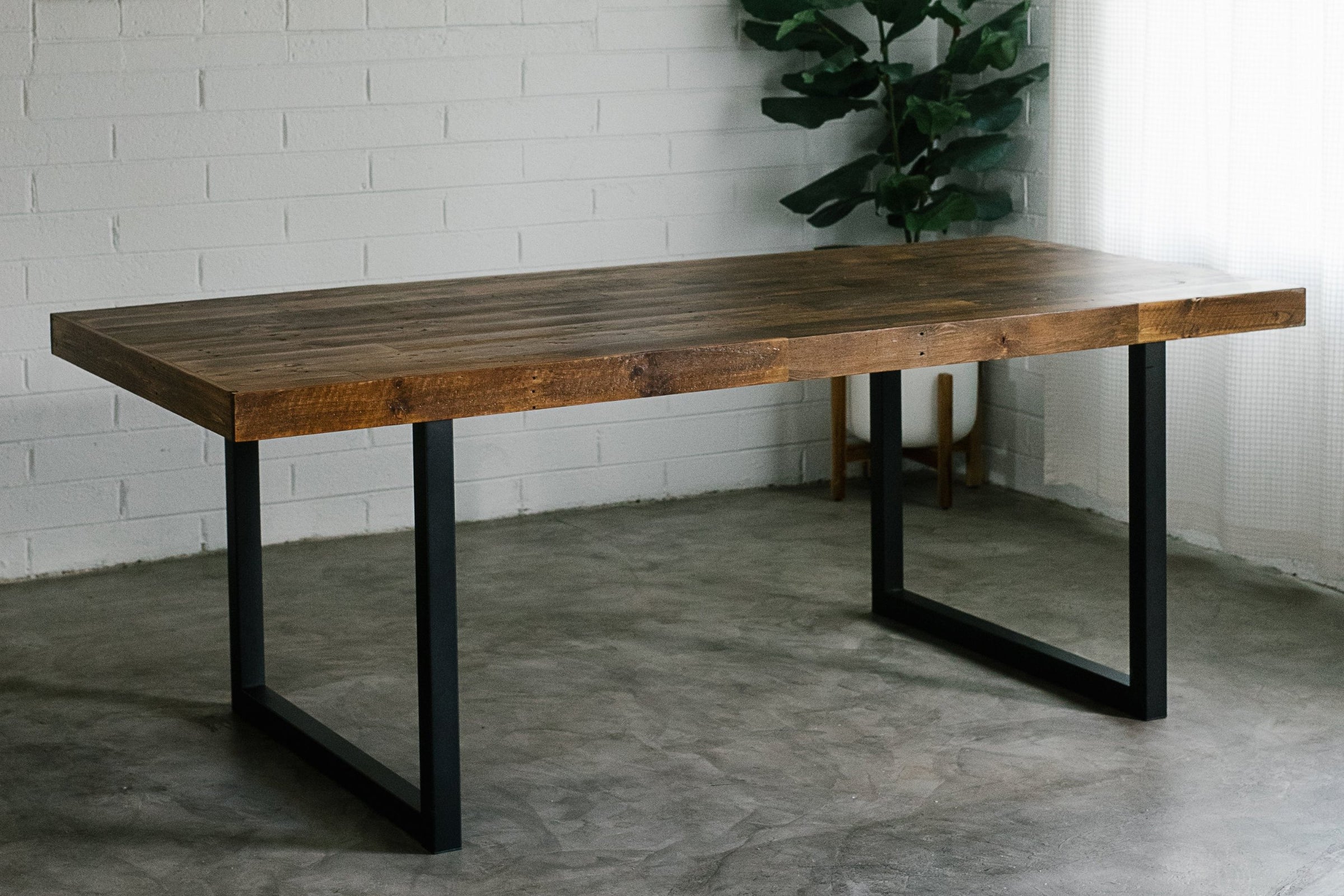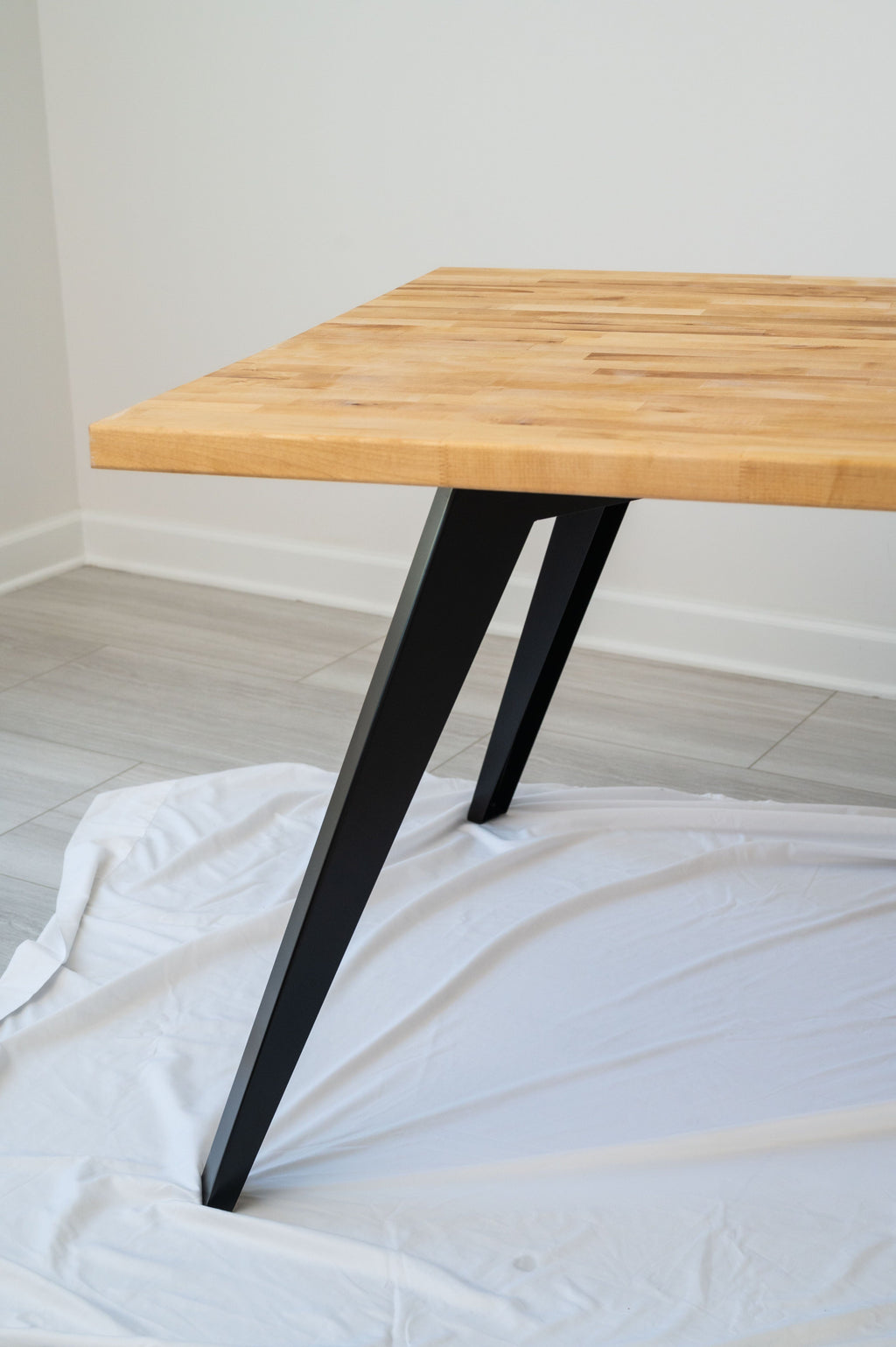Include Stamina and Charm Making Use Of Strong Dining Table Legs Wood Pieces
Include Stamina and Charm Making Use Of Strong Dining Table Legs Wood Pieces
Blog Article
Important Considerations for Selecting the Right Table Legs Wood
Selecting the appropriate wood for dining table legs includes a nuanced understanding of different elements that affect both functionality and visual appeal. The choice of timber type, ranging from robust woods to extra fragile softwoods, plays an essential duty in ensuring durability and security. Additionally, considerations concerning design, spending plan, and upkeep have to be thoroughly assessed. Each of these components can dramatically affect the general experience of your eating space. Understanding exactly how these variables relate is vital for making an educated choice that satisfies your certain requirements and choices - Dining Table Legs Wood. What considerations will you focus on in your option process?
Value of Wood Kind

Hardwoods, such as maple, walnut, and oak, are frequently preferred for their stamina and resistance to put on. These kinds of timber give a robust structure that can endure everyday use, making them optimal for dining tables that experience constant gatherings. On the other hand, softer timbers like pine may be a lot more vulnerable to scratches and dents, which may not be ideal for high-traffic locations.
Additionally, the choice of wood can likewise influence the simplicity of maintenance. Some woods call for routine oiling or sealing to maintain their look, while others may be more flexible. Eventually, selecting the proper wood type involves balancing aesthetic considerations with functional demands, making sure that the table legs not only look attractive however also stand the examination of time.
Evaluating Stability and Stamina
When examining table legs, one need to think about the stability and strength they supply to the overall structure. The legs are critical in sustaining the tabletop and guaranteeing the dining experience is delightful and risk-free. A steady table is crucial for avoiding tottering or tipping, which can cause spills or crashes during dishes.
The choice of timber type considerably impacts toughness. Hardwoods such as walnut, oak, and maple are normally a lot more long lasting and durable than softwoods like pine or fir. In addition, the thickness and design of the legs play a critical function; thicker legs or those with a tapered style can offer much better assistance and stability.

Visual Considerations
While functionality is critical, the aesthetic charm of table legs can not be ignored, as they significantly influence the general style and atmosphere of the eating room. The option of coating, wood, and layout can detract or improve from the table's aesthetic influence.

Finishes likewise play a vital role in visual appeals. An all-natural finish can highlight the wood's innate charm, while repainted or tarnished legs can present shade and character right into the space. In addition, the percentage and range of the legs loved one to the tabletop and surrounding furniture has to be considered to make sure aesthetic balance and communication.
Eventually, the eating table legs should not just serve a useful objective however additionally contribute to a natural and welcoming ambience, making them a vital factor to consider in the overall design of the dining area.
Maintenance Needs
To make sure long life and protect the charm of wood table legs, routine maintenance is crucial (Dining Table Legs click here for more info Wood). Timber is an all-natural material that can be at risk to harm from wetness, warm, and wear. Developing a regular treatment plan will considerably improve the resilience of your eating table legs.
Begin with normal cleaning using a soft, lint-free cloth to remove dirt and debris that can damage the surface. For more thorough cleaning, use a mild soap remedy and damp fabric, avoiding excess wetness that can seep right into the wood. It is recommended to apply a high-grade wood gloss or conditioner every few months to nourish the wood and keep its luster.
Deal with any type of damages or scrapes without delay with proper timber filler or touch-up pens to prevent further damage. By adhering to these upkeep needs, you will not just preserve the aesthetic allure of your wood dining table legs yet additionally extend their functional life-span.
Budget and Cost Variables
Budget and price aspects regularly play an essential function in the decision-making procedure for selecting wooden table legs. When assessing choices, it is vital to develop a clear spending plan that straightens with your overall furnishings investment. The expense of wood table legs can vary significantly based on the sort of timber, layout, and workmanship intricacy.
Hardwoods such as oak, cherry, and walnut typically regulate greater rates as a result of their sturdiness and visual appeal. On the other hand, softer timbers like want may be more budget friendly yet may not offer the very same durability. In addition, customized or artisan-crafted legs can sustain additional prices, showing the skill and time bought their creation.
It is also important to think about the possible long-lasting worth of your investment. While selecting lower-cost products may seem financially prudent originally, they may call for even more frequent replacement or repair work, ultimately boosting overall expenditure.
As a result, balancing high quality and expense is vital. Prioritize products that satisfy your visual choices while ensuring they fit pleasantly within your budget plan, permitting you to produce a dining area that is both aesthetically enticing and functional.
Verdict
Finally, choosing the proper wood for eating table legs requires cautious factor to consider of numerous elements, including timber type, security, appearances, maintenance, and spending plan. Hardwoods such as oak and walnut provide exceptional sturdiness and stamina, while style and density add to total stability. Visual charm and maintenance demands have to align with individual preferences and way try these out of living. Eventually, an educated choice will enhance the durability and aesthetic appeal of the dining table, making sure satisfaction and performance for years to come.
Choosing the best type of timber for eating table legs is vital for Website both aesthetic appeal and structural honesty. Ultimately, selecting the appropriate wood kind includes balancing aesthetic considerations with functional demands, guaranteeing that the eating table legs not just look enticing but likewise stand the test of time.
It is suggested to use a premium timber gloss or conditioner every couple of months to nourish the timber and preserve its gloss.
The cost of wooden dining table legs can differ substantially based on the type of wood, layout, and workmanship complexity.
In final thought, picking the appropriate wood for eating table legs requires cautious factor to consider of different aspects, including timber type, security, visual appeals, maintenance, and spending plan.
Report this page